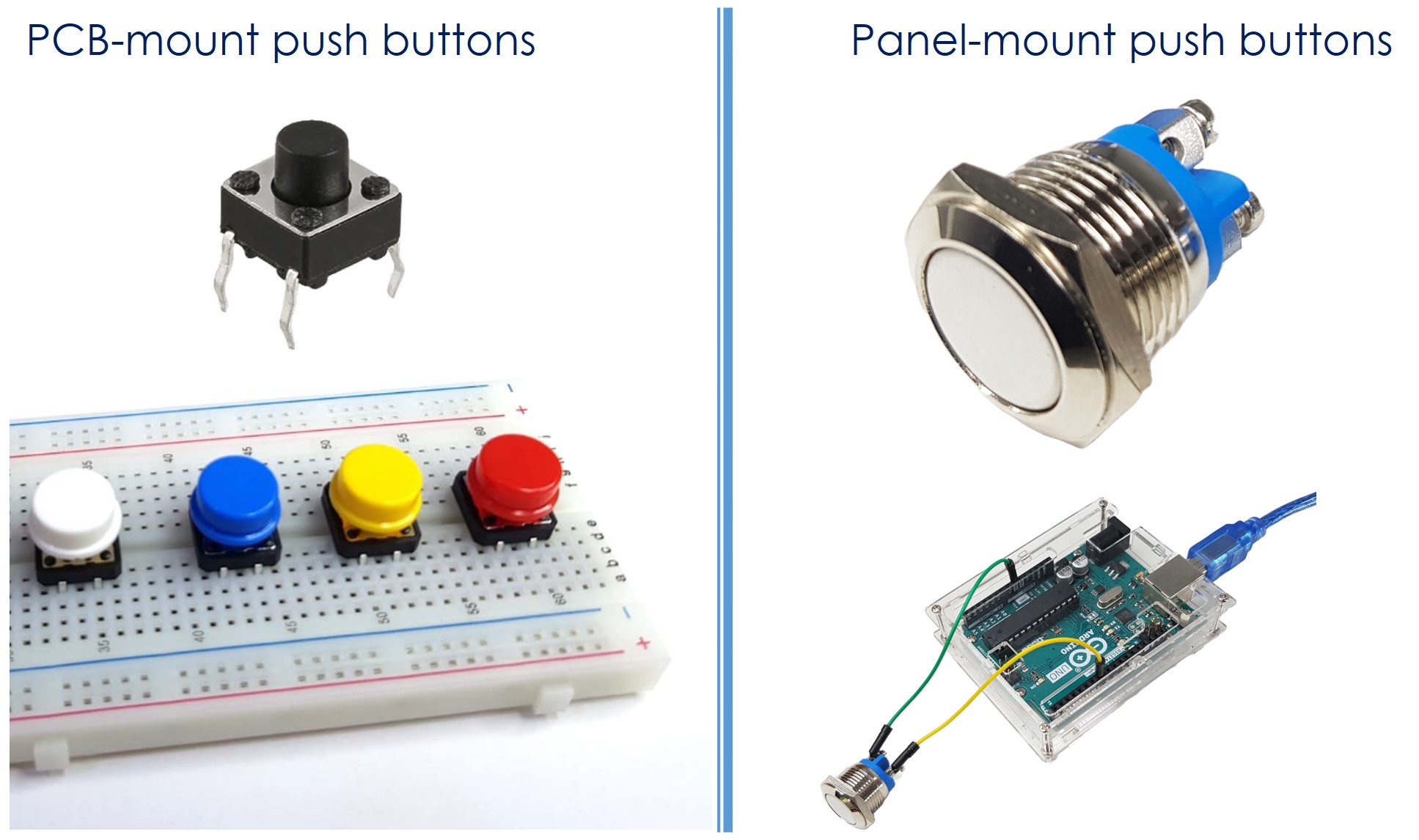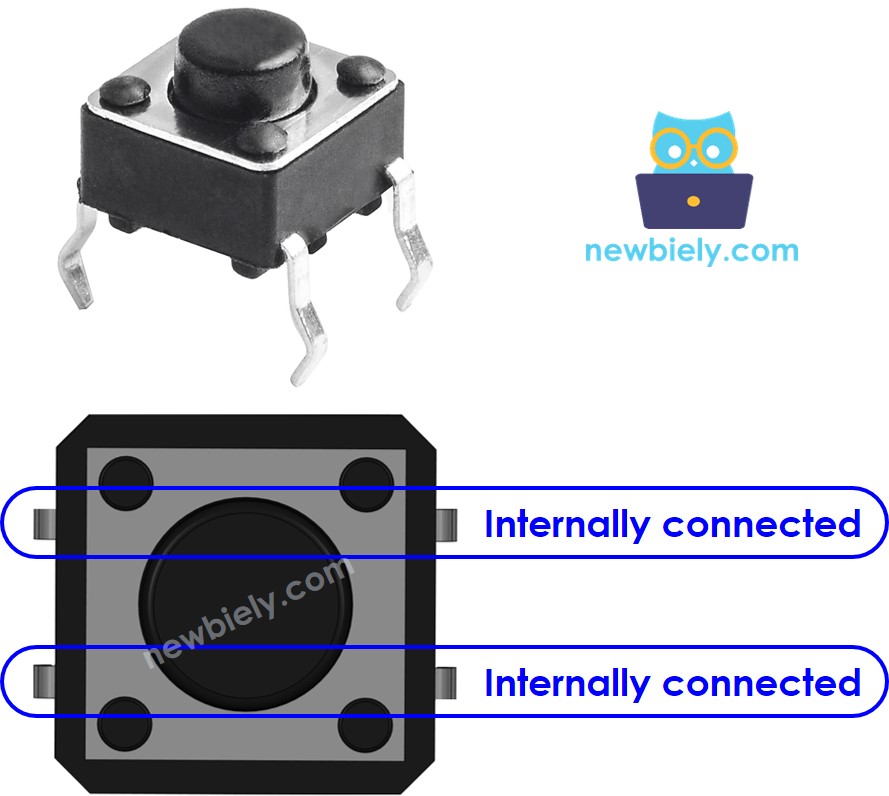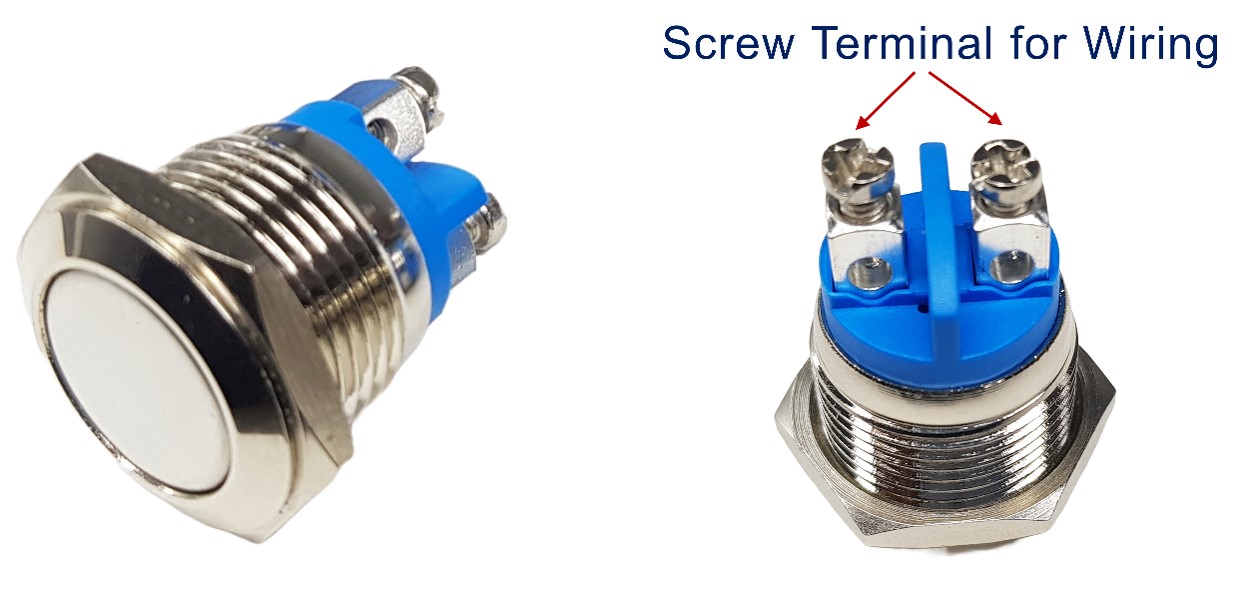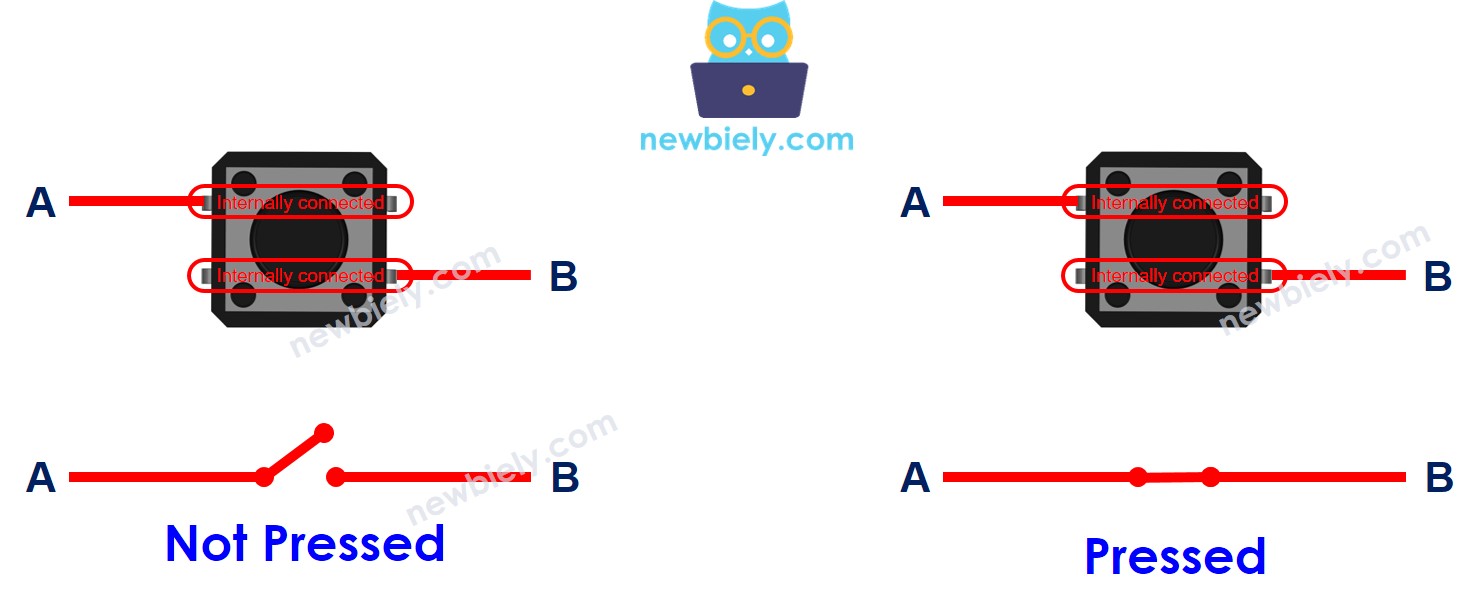ESP8266 - Button
This tutorial instructs you how to use ESP8266 with button. In detail, we will learn:
How to connect the button to ESP8266
How to program ESP8266 to read the state of the button
How to program ESP8266 to detect the pressing and releasing events from button.
How to prevent the floating input problem when using the button with ESP8266.
How to prevent the chattering problem when using the button with ESP8266.
The button is known by other names, such as pushbutton, tactile button or momentary switch. It is a common component used in many ESP8266 projects and is easy to use. However, it can be confusing for beginners due to its mechanical, physical aspects and the ways it can be used. This tutorial makes it easier for those just starting out.
Or you can buy the following kits:
Disclosure: Some of the links provided in this section are Amazon affiliate links. We may receive a commission for any purchases made through these links at no additional cost to you.
Additionally, some of these links are for products from our own brand,
DIYables .
When working with a button, beginners commonly encounter two issues:
1. Floating input problem:.
Symptom: The value read from the input pin does not correspond with the state of the button press.
Cause: A pull-up or pull-down resistor is not in use with the input pin.
Solution: Utilize a pull-up or pull-down resistor as instructed in this tutorial.
2. Chattering phenomenon:.
Symptom: Despite being pressed once, the button is causing the ESP8266 code to detect multiple presses.
Cause: The state of the button (or switch) is rapidly oscillating between LOW and HIGH due to mechanical and physical issues.
This is a factor that should only be taken into account for applications that require precise press detection.
※ NOTE THAT:
Do not confuse the button with the following:
There are various types of push buttons, which can be broadly categorized into two groups:
Nevertheless, these pins are connnected in pair internally. Thus, we only have to utilize two of the four pins, which are not connnected within.
There are four methods of connecting to the button, two of which are symmetrical (as seen in the image).
? Why does a button have four pins when we only use two of them?
⇒ To ensure that it is firmly mounted on the PCB (printed circuit board) and can withstand the pressure.
image source: diyables.io
GND: Connect this pin to ground.
VCC: Connect this pin to a 3.3V power supply.
OUT: Connect this pin to a digital input on your ESP8266.
With this configuration, the module outputs LOW when the button is not pressed and outputs HIGH when the button is pressed.
When the button is not pressed, pin A is not connected to pin B.
However, when the button is pressed, pin A is connected to pin B.
One button's pin is connected to either VCC or GND. The other pin is connected to a pin on the ESP8266. By checking the state of an ESP8266 pin configured as an input, we can determine whether a button has been pressed or not.
The connection between the button and ESP8266, as well as the configuration of the ESP8266's pin, will determine the relationship between the button state and the pressing state.
There are two ways to use a button with ESP8266:
One button's pin is connected to VCC, the other is connected to an ESP8266's pin with a pull-down resistor
When the button is pressed, the ESP8266's pin state will be HIGH. If not, the pin state will be LOW
We can either use an internal or external resistor. The internal resistor is already built inside ESP8266, and can be set via ESP8266 code.
One button's pin is connected to GND, the other is connected to an ESP8266's pin with a pull-up resistor
When the button is pressed, the ESP8266's pin state will be LOW. If not, the pin state will be HIGH
We can either use an internal or external resistor. The internal resistor is already built inside ESP8266, and can be set via ESP8266 code.
※ NOTE THAT:
If we do not follow the best practice, the state of the input pin will be “floating” when the button is NOT pressed. This means the state can be HIGH or LOW (unstable, unfixed), resulting in wrong detection.
The worst practice: initializes the ESP8266 pin as an input (by using pinMode(BUTTON_PIN, INPUT)) and does NOT use any external pull-down/pull-up resistor.
The best practice: initializes the ESP8266 pin as an internal pull-up input (by using pinMode(BUTTON_PIN, INPUT_PULLUP)). It does NOT need to use any external pull-down/pull-up resistor.
For the sake of simplicity, this tutorial utilizes the most basic approach: initializing the ESP8266 pin as an internal pull-up input without the use of an external resistor. Newcomers do not have to worry about connecting the pull-up/pull-down resistor. All they need to do is write the ESP8266 code.
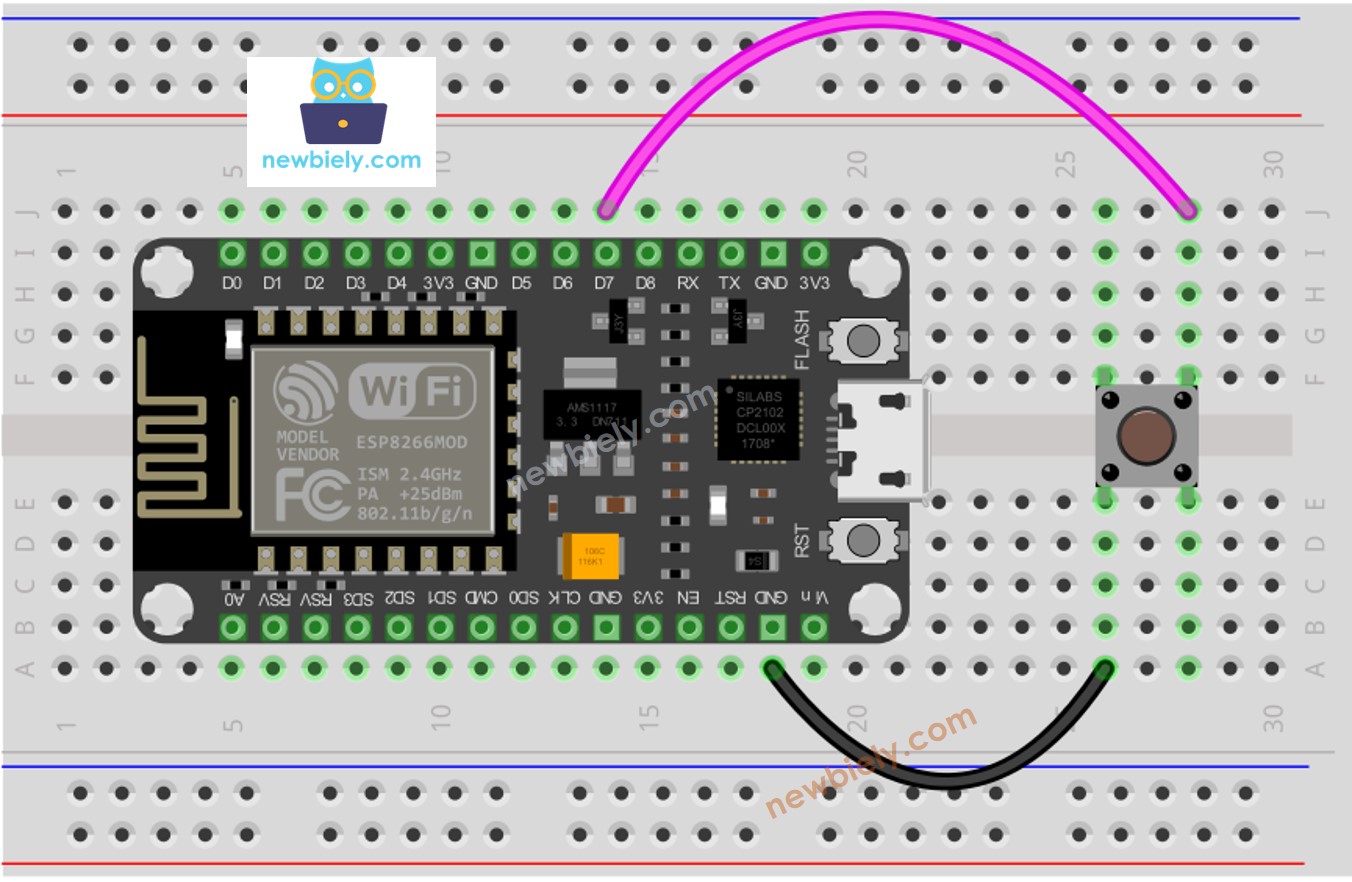
This image is created using Fritzing. Click to enlarge image
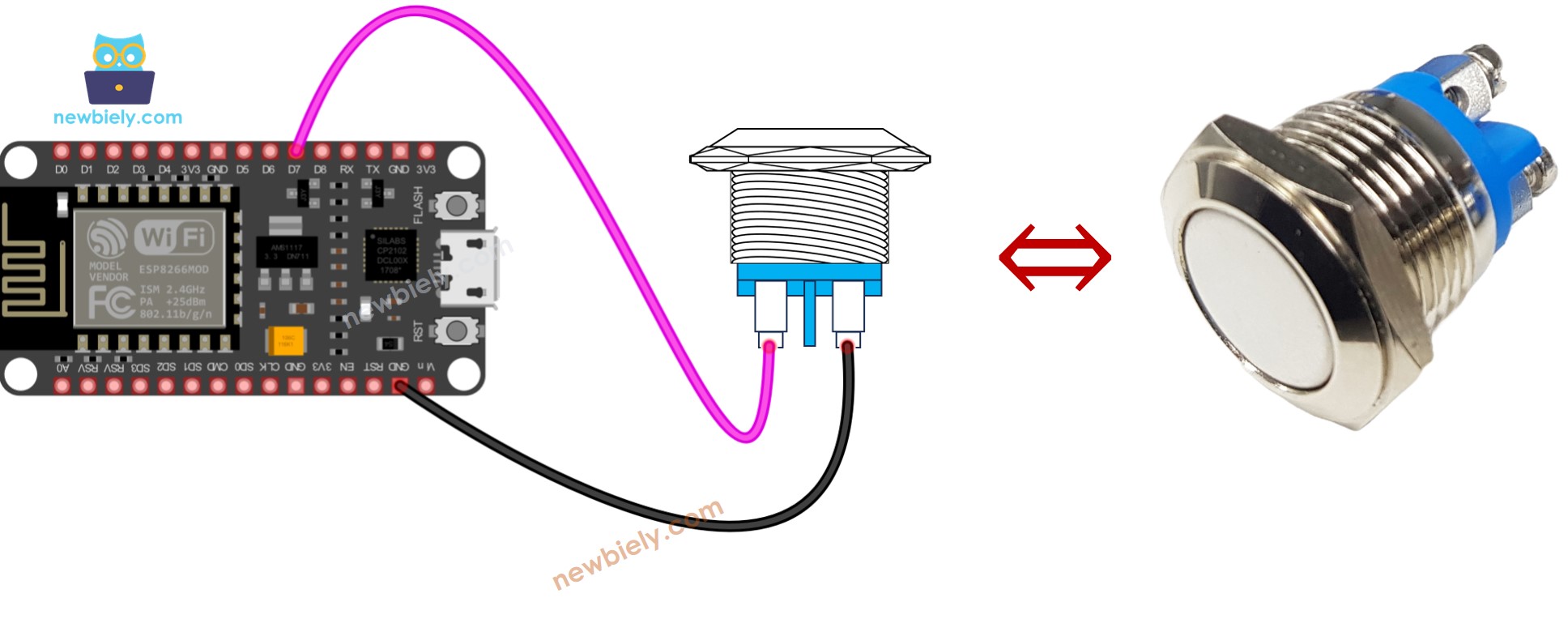
This image is created using Fritzing. Click to enlarge image
See more in ESP8266's pinout and how to supply power to the ESP8266 and other components.
Using the
pinMode() function, set the ESP8266 pin to an internal pull-up input. For example, pin D7:
pinMode(D7, INPUT_PULLUP);
Access the state of the ESP8266 pin by using the
digitalRead() function.
int button_state = digitalRead(BUTTON_PIN);
※ NOTE THAT:
Two common use cases are available:
The first is to take action if the input state is HIGH, and to do something in reverse if the input state is LOW.
The second is to take action when the input state changes from LOW to HIGH (or HIGH to LOW).
We select one of them depending on the application. For example, if we want to use a button to control an LED:
If the intention is for the LED to be ON when the button is pressed and OFF when the button is NOT pressed, the first use case should be used.
If the goal is for the LED to toggle between ON and OFF each time the button is pressed, the second use case should be employed.
const int BUTTON_PIN = D7;
int prev_button_state = HIGH;
int button_state;
void setup() {
Serial.begin(9600);
pinMode(BUTTON_PIN, INPUT_PULLUP);
}
void loop() {
button_state = digitalRead(BUTTON_PIN);
if(prev_button_state == LOW && button_state == HIGH)
Serial.println("The state changed from LOW to HIGH");
prev_button_state = button_state;
}
To get started with ESP8266 on Arduino IDE, follow these steps:
Wire the components as shown in the diagram.
Connect the ESP8266 board to your computer using a USB cable.
Open Arduino IDE on your computer.
Choose the correct ESP8266 board, such as (e.g. NodeMCU 1.0 (ESP-12E Module)), and its respective COM port.
Attach the ESP8266 to your computer with a USB cable.
Launch the Arduino IDE, select the correct board and port.
Copy the code below and open it in the Arduino IDE.
#define BUTTON_PIN D7
void setup() {
Serial.begin(9600);
pinMode(BUTTON_PIN, INPUT_PULLUP);
}
void loop() {
int button_state = digitalRead(BUTTON_PIN);
Serial.println(button_state);
}
1 is HIGH,. 0 is LOW.
Check out the line-by-line explanation contained in the comments of the source code!
Let's change the code so that it can detect when a press and release event occurs.
Wire the components as shown in the diagram.
Connect the ESP8266 board to your computer using a USB cable.
Open Arduino IDE on your computer.
Choose the correct ESP8266 board, such as (e.g. NodeMCU 1.0 (ESP-12E Module)), and its respective COM port.
Alter the code as follows:
#define BUTTON_PIN D7
int prev_button_state = LOW;
int button_state;
void setup() {
Serial.begin(9600);
pinMode(BUTTON_PIN, INPUT_PULLUP);
}
void loop() {
button_state = digitalRead(BUTTON_PIN);
if (prev_button_state == HIGH && button_state == LOW)
Serial.println("The button is pressed");
else if (prev_button_state == LOW && button_state == HIGH)
Serial.println("The button is released");
prev_button_state = button_state;
}
The button is pressed
The button is released
※ NOTE THAT:
Even if you press and release the button just once, the output in the Serial Monitor may display multiple pressed and released events. This is the expected behavior of the button. This is known as the "chattering phenomenon". For more information, please refer to the ESP8266 - Button Debounce tutorial.
※ NOTE THAT:
If you are using the
button module, configure the pin to input mode using
pinMode(BUTTON_PIN, INPUT). With this setup, the module will output
LOW when the button is unpressed and
HIGH when the button is pressed.
When the button is pressed, turn on the LED.
When the button is not pressed, turn off the LED.
Each time the button is pressed, switch the LED between ON and OFF.
At what times should we NOT use a pull-down/pull-up resistor for an input pin? 2. When should we not utilize a pull-down/pull-up resistor for an input pin?
If the sensor has either closed or open states, a pull-up or pull-down resistor is required to make these states become LOW and HIGH. Examples of such sensors are push-button, switch, magnetic contact switch (door sensor).
On the other hand, if the sensor has two defined voltage levels (LOW and HIGH), a pull-up or pull-down resistor is not needed. Examples of such sensors are motion sensor and touch sensor.





